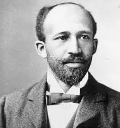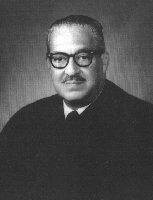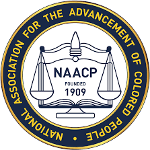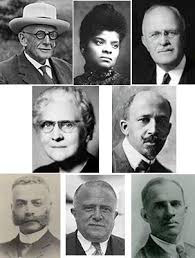NAACP: Civil Rights Stalwarts
One of the oldest organizations seeking to advance the rights of African-Americans is the National Assocation for the Advancement of Colored People (NAACP), founded in 1909. Among the founding members of the NAACP, four were African-American:
Some of the founding members had also been involved in the Niagara Movement, a civil rights group led by Du Bois. The NAACP met in New York City; its first president was Moorfield Storey, a white lawyer, and Grimké was its first vice-president. A total of 60 put their names to founding documents. The official founding date of the NAACP was Feb. 12, 1909. The mission of the organization was this: To promote equality of rights and to eradicate caste or race prejudice among the citizens of the United States; to advance the interest of colored citizens; to secure for them impartial suffrage; and to increase their opportunities for securing justice in the courts, education for the children, employment according to their ability and complete equality before law.  Du Bois took a leading role in print and publications, and he founded The Crisis, a publication featuring African-American writers that proved a powerful voice for the Harlem Renaissance and to this day remains in print. The goals of the NAACP were to effect change through the judicial system and through peaceful protests. The organization made a habit of challenging discriminatory laws in states and at the federal level. One of the organization's early successes was challenging an Oklahoma consitutional amendment "grandather clause," which enabled illiterate white people to avoid taking a literacy test in order to register to vote; African-Americans, on the other hand, whether they could read or not, were required to take the test. The U.S. Supreme Court in 1915 ruled that such grandfather clauses were unconstitutional. In that same year, the NAACP gained more of a national focus for its role in organizing protests against the D.W. Griffith film Birth of a Nation, which demeaned African-Americans and made heroes of the Ku Klux Klan. The organization's strong anti-lynching focus resulted in a 10,000-strong protest in New York in 1917; it was one of the country's first mass demonstrations against racial violence, and the protest was itself silent. The NAACP endeavored to spread its organization across the country; by the end of its decade, the organzation had 90,000 members and more than 300 branches nationwide. Membership in and the public profile of the group continued to grow as the 20th Century progressed, thanks in large part to the influential leadership of executive secretaries James Weldon Johnson and Walter F. White. The NAACP in 1931 offered legal representation to a group of young African-Americans who came to be known as the Scottsboro Boys; they were falsely charged with attacking two white women. 
In the wake of continued racial discrimination during the 1940s, attorney Thurgood Marshall founded the Legal Defense and Educational Fund, to further the NAACP's aim of challenging discriminatory laws. It was Marshall himself who argued before the Supreme Court the famous Brown v. Board case that resulted in a mandate for school desegregation. Just a year later, an Alabama local chapter secretary of the organization named Rosa Parks sparked a monthslong bus boycott in Montgomery by refusing to give up her seat. The NAACP was heavily involved in those efforts. 
The organization played a prominent role in subsequent lawsuits and court cases that steadily reduced the number of legal discriminations against African-Americans; that work continues to this day. The NAACP also, led by executive secretary Roy Wilkins, played a large role in organizing the 1963 March on Washington, during which Martin Luther King, Jr. delivered his famous "I Have a Dream" speech and in lobbying Congress to pass the Civil Rights Act of 1964 and the Voting Rights Act of 1965. The work of the NAACP continued throughout the 20th Century and into the 21st Century. Today, the NAACP, with its headquarters in Baltimore, has 2,200 chapters worldwide, with a membership of more than half a million. |
|
Social Studies for Kids
copyright 2002–2025
David White






